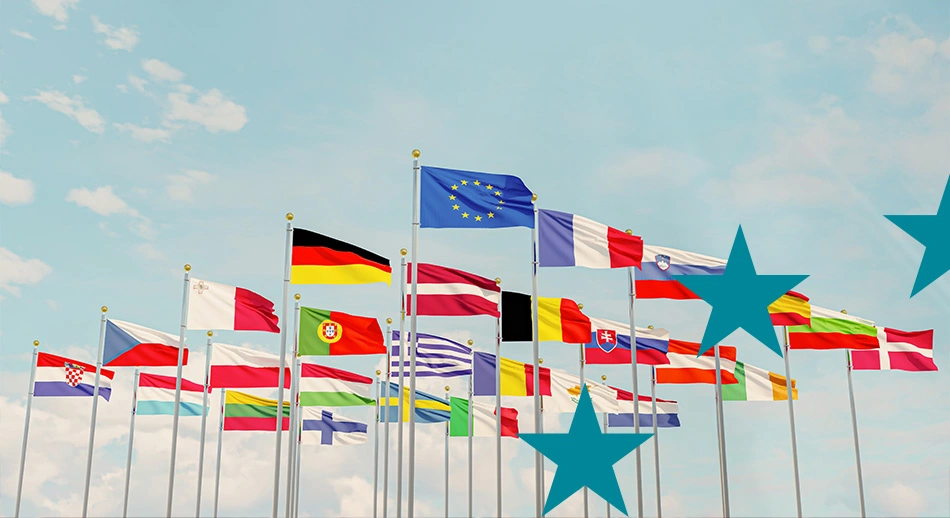In the coming days we will have the first important events and news on European Territorial Cooperation 2021-2027. Let’s find out together
A general framework
As you may recall, European Territorial Cooperation is an integral part of the European Union’s Cohesion Policy, is financed by the Structural Funds (particularly the ERDF) and promotes collaboration between territories of different EU member states, with joint actions aimed at addressing common problems and objectives. Provides for three areas of action, with the following indicative allocations for the period 2021-2027:
- Cross-border cooperation (between regions of two different states bordering by land or sea): 6.5 billion euros;
- Transnational cooperation (between larger transnational territories belonging to different states): 1.6 billion euros;
- Interregional cooperation (across local organisations, in specific cohesion policy thematic areas of common interest): €0.5 billion.
The funds earmarked for Territorial Cooperation have a very broad scope of intervention, potentially spanning many areas of common interest to European regions: proposing (in line with the 2021-2027 programming of the Structural Funds) to build a “smarter,” “greener,” more connected, “social,” and more citizen-friendly Europe-but also safer and with better governance of cooperation.
An overview
Territorial Cooperation Programs involve a two-tiered process of elaboration and approval: community programming and programming by the specific Managing Authority (as is the case for Operational Programs required for the execution of Structural Funds). The process of developing and approving the specific Territorial Cooperation programs is still ongoing, with different levels of progress depending on the program. For this reason, our Guide does not yet give details of them, and the reference site itself is still more focused on 2014-2020 programming. The first Territorial Cooperation programs will be approved this fall, and the others will follow in the months to come. However, we can already provide some previews of some of the most important Territorial Cooperation programs. Where do we stand?
Transnational Cooperation
The most advanced Territorial Cooperation programs are probably those that refer to the second “level” of intervention, that of Transnational Cooperation (between extended transnational territories belonging to different states).
The Central Europe program presents a site dedicated to 2021-2027 programming that is very extensive and detailed, proposes a draft of the Program, and expects its official approval by the end of the year. In addition, it already includes a first major call to be launched on November 15 (with projects launching late next year) and presents an initial guide to Central Europe funding with operational details and insights (including a link to the Central Europe community, a newsletter and a YouTube channel with dedicated content). The program covers all regions in northern Italy: Piedmont, Liguria, Valle d’Aosta, Lombardy, Veneto, Trentino-Alto Adige, Friuli-Venezia Giulia and Emilia-Romagna.
Alpine Space is equally advanced. The relevant program is already available in final form and is awaiting approval by the European Commission. Its reference site has already been updated to 2021-2027 programming and presents the main points of the program (also available in a summary overview). The first call is expected to be launched soon. Alpine Space also offers an articulated “library” for documenting the program’s best practices, a website and facility dedicated to strategic aspects, and national contact points for reference.
The program covers all Italian regions in the Alpine arc: Piedmont, Liguria, Aosta Valley, Lombardy, Veneto, Trentino-Alto Adige, and Friuli-Venezia Giulia.
The Euro-MED program (formerly known as MED) presents a draft program that is already relatively advanced, accompanied by a detailed spatial analysis and a brief presentation, a summary infographic and a summary of the approval process (this is the reference site).
The program covers all Italian regions (except Trentino-South Tyrol).
The ADRION program, on the other hand, presents only some preliminary information on its website, including the baseline spatial analysis for preparing the program (with its annexes).
The program covers Italian regions facing or close to the Adriatic and Ionian Seas: Lombardy, Veneto, Trentino-Alto Adige, Friuli-Venezia Giulia, Emilia-Romagna, Umbria, Marche, Abruzzo, Molise, Puglia, Basilicata, Calabria and Sicily.
Interregional cooperation
The situation is more varied for Interregional Cooperation programs, corresponding to the most cross-cutting level of intervention (thematic aspects common to all European regions).
The Interreg Europe program (in support of improving the policies of all European regional and local authorities) is already at a very advanced stage: it is available in a final version (published in September) and activities are expected to start in January.
The INTERACT program (in support of European Territorial Cooperation programs) is obviously active, because of its very mission, in supporting the process of consideration, formulation and approval of other Territorial Cooperation programs. It also presents a useful summary of the steps required to launch new calls under Territorial Cooperation programs.
Information is even more limited regarding the URBACT (in support of sustainable development of cities across Europe) and ESPON (in support of research and analysis for spatial development) programs.
Cross-border cooperation
Cross-border cooperation programs, which involve Italian regions bordering by sea or land with other countries, have a more varied and articulated situation. We provide below (where available) links to the respective pages on 2021-2027 programming.
Italy-France Maritime | Italy-France ALCOTRA | Italy-Switzerland | Italy-Austria | Italy-Slovenia | Italy-Croatia | Greece-Italy | Italy-Malta | IPA Italy-Albania-Montenegro | ENI Italy-Tunisia | ENI CBC MED
A first series of events and infodays
The first launch events and infodays related to the 2021-2027 programming of territorial cooperation funds will take place just in the next few days: a great opportunity to learn more about what lies ahead in the coming years and, in particular, the content of the first calls that will be launched soon. We have in particular:
- The launch event for the first call of the Central Europe program (Nov. 15)
- The closing (2014-2020) and launch (2021-2027) event of Alpine Space (Nov. 22-23)
- The 2021-2027 programming launch event for Euro-MED (Dec. 2)
- The launch event for the Interreg Europe 2021-2027 program (Nov. 24-25)
All events will be accessible online-please attend!
Programs and projects for all
Territorial Cooperation programs involve a very broad set of sectors, cover all Italian regions, and are both a source of funding close to people and territories and an important factor in their international openness.
For this reason, they represent a particularly interesting opportunity for all local organisations, associations, institutions and companies. All that remains is to seize it: the process of defining the programs is ongoing, but we will keep you updated. Keep following us!




